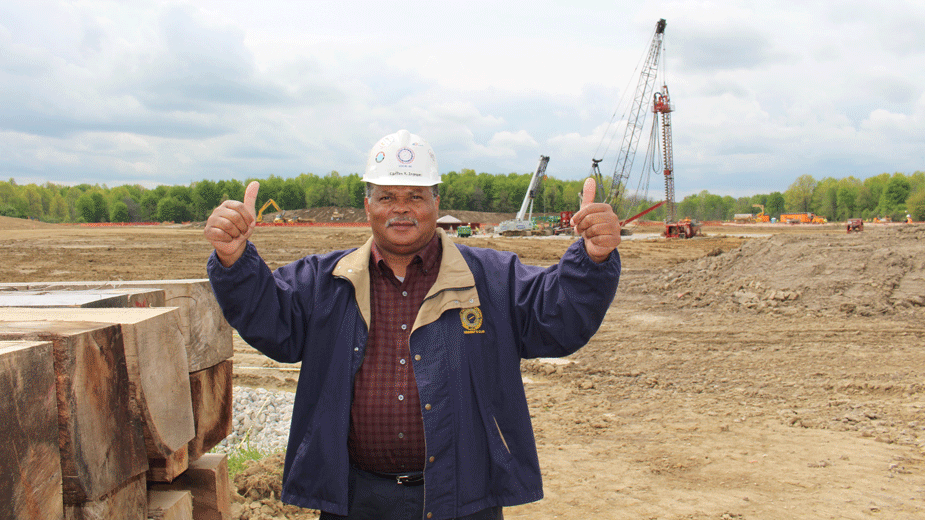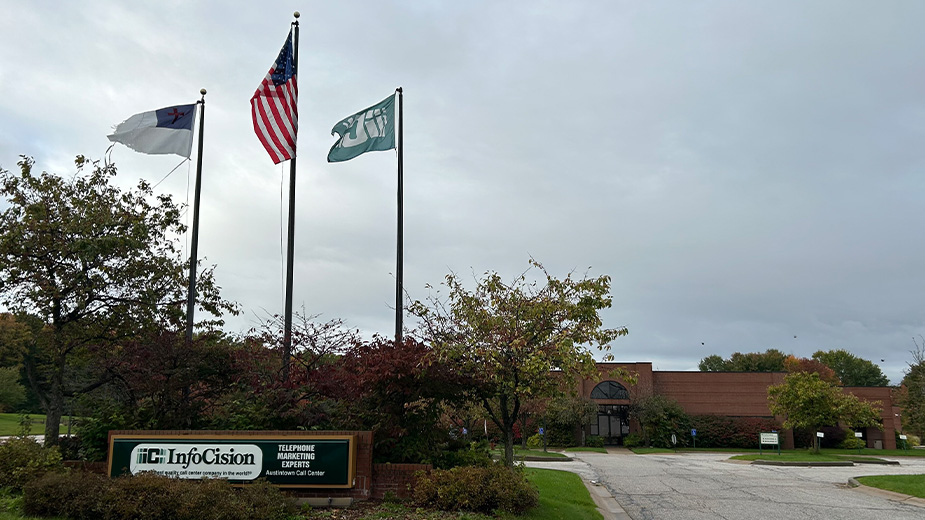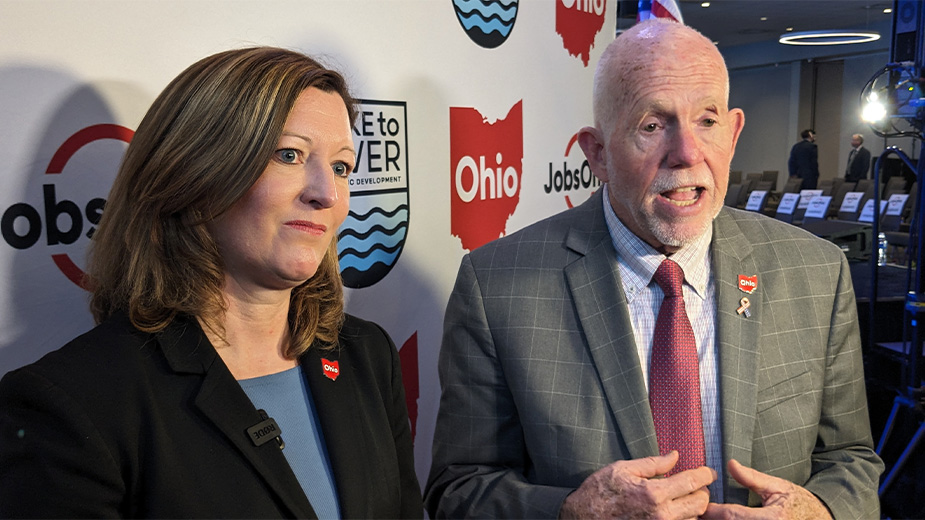Lots of Work for the Region’s Skilled Tradesmen
YOUNGSTOWN, Ohio – The men and women who work in the building trades will have no shortage of projects this construction season. They will be building hospitals, fitness centers, assisted living and nursing homes, the New Castle School of Trades campus in East Liverpool, renovating schools, working at Youngstown State University, moving Youngstown Municipal Court from City Hall to the City Hall Annex, building the new Mahoning County Dog Shelter, repairing roads plus completing another $20 million in bridgework in Trumbull, Mahoning and Columbiana counties.
And the largest project, the $899 million Lordstown Energy Center plant in Lordstown.
There, Carlton K. Ingram, business agent for District 2 of Local 66 of the Operating Engineers union, sees a steady source of work for his members who are clearing the topsoil with heavy earth-moving equipment. The official groundbreaking is scheduled for Monday.
“Highway work is booming,” reports Rocky DiGennaro Jr., business agent for Local 125 of the Laborers International union, Boardman. “And we just took on a new class of apprentices.”
Most of the members of the 22 locals that make up the Western Reserve Building & Construction Trades Council are working, either in the Mahoning Valley or a nearby jurisdiction. The business agents interviewed expect to have their entire rosters working by midsummer.
All have vibrant apprenticeship programs, an indicator of contractors’ need for the skilled tradesmen.
The demand for welders remains strong, say Marty Loney and Tim Callion at Local 396 of the Plumbers & Steamfitters union, 400 of the 470 active members at work. In addition, steamfitters are replacing three boilers at YSU and installing medical gas lines in hospitals.
At the site of Clean Energy Future, Ingram agrees that the work is “the dream job of every 8-year-old boy” as his members clear the topsoil. The 12 journeymen and apprentices – that number will grow to 30 by summer – “make it look easy, but believe me, it’s not,” he says. “They’re digging in the blind most of the time” because the equipment they operate – tall cranes, bulldozers, forklifts and backhoes – is so huge they can’t always see what they’re working on.
One journeyman, Bill “Cowboy” Nicholaus, informed Ingram, “It’s a pleasure to work for a company that knows what it’s doing,” as Ingram was interviewed. The Kokosing Construction Co., Fredericktown, is general contractor on the project.
In addition to the Lordstown Energy Center, operating engineers are working on the Lords-town exchange of the Ohio Turnpike, “a $30 million revamp,” Ingram says, and on six miles of Interstate 80 in Mahoning and Trumbull counties, which includes a bridge. Shelly & Sands Inc., Youngstown, and Keffler Construction Co., Canfield, share that $92 million project.
The business agents also discussed the ongoing training the journeymen undergo to stay current in the latest technology and renew their certifications.
The business agent for Local 476 of the Painters union, Jim Taylor, explained how industrial painting is far more involved than most realize, whether it’s painting the interiors and exteriors of water towers, wastewater plants or bridges. Sandblasting a surface is very precise work, he says. “You must know the [metal] surface and you must get the pressure of the nozzle exactly right” to remove the rust that has formed. In addition, work inside a water tank results in “air filled with dust.”
Applying the paint, both the primer and exterior, requires exact thicknesses. “You must have the thickness right or the paint won’t stay on,” he explains. Hence the need for a three-year apprenticeship and refresher courses because of the new paints and new materials in use. Painters who earn two state-recognized certifications perform this work.
While work on bridges and overpasses is performed outside, painters often put on harnesses to work high above the ground. Safety is everything, Taylor says, especially when they paint a bridge that spans a river or reservoir.
They test for lead in paints used long ago on older bridges – an Ohio Department of Transportation requirement – before repainting them. “Twenty-five percent of our people are CAS-certified to work on bridges,” Taylor relates, “Next year it will be 50%.”
The president of Local 64 of the IBEW or electricians union, Bill Booth, relates how efforts to make buildings more energy-efficient are both driving work for his members and their need to update their skills and certifications.
“The [electrical] code is always changing,” Booth notes, “and we have to stay up with it.”
Besides knowing how to install outlets and wire a building, electricians must know how to drive and operate a truck with a cherry picker so they can change outdoor lights. They must also know how to wear a harness and work safely in the bucket.
Demand for his members “picks back up in February” because residential work is often financed by customers’ income tax refunds, Booth says. “The housing market is strong but this year was slow starting. We’re starting to see more bidding” on commercial and infrastructure work.
The electricians are often the last called in to work on a new building but not so on existing buildings. Hence, Local 64 has worked or will work at the City Hall Annex being converted to judges’ chambers and courtrooms for municipal court, the Valley campus of Akron Children’s Hospital, Salem Regional Medical Center, St. Elizabeth-Youngstown Hospital and new student housing at YSU.
All but 6% of the 700 active members of Local 171 of the Carpenters Union are working, business agent Tony DiTommaso says. Seventy men and women are in its four-year apprenticeship program and the work they do encompasses laying floors, building scaffolds and working with concrete and installing acoustic ceilings.
“One-hundred thirty-eight just went through infectious-control certification,” DiTommaso says, because of the work they’re going at hospitals in northeastern Ohio.
The carpenters earn their certifications on their own time, he says, “on top of their work week in a lot of cases,” and pay the fees out of their own pockets.
Pictured: Carlton K. Ingram, business agent for District 2 of Local 66 of the Operating Engineers, looks forward to lots of work at the energy plant under construction in Lordstown.
Copyright 2024 The Business Journal, Youngstown, Ohio.



